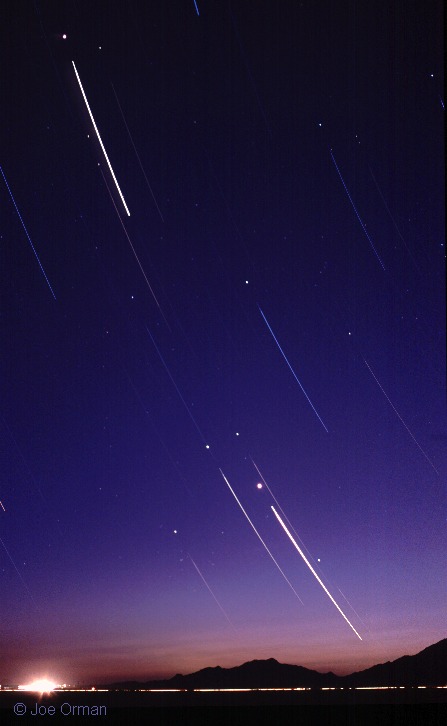Astronomy Picture of the Day
Discover the cosmos! Each day a different image or photograph of our fascinating universe is featured, along with a brief explanation written by a professional astronomer.

Credit & Copyright: Joe Orman |
Explanation: Positioning his camera and tripod on planet Earth, near Maricopa, Arizona, USA, astrophotographer Joe Orman created this trailing display of the ongoing sky-full-of-planets on May 3rd. He initially captured the grouping in a 20 second long time exposure recording the positions of the bright planets and stars. Covering the camera lens for five minutes, he then exposed the same frame for 45 minutes, tracing the gentle arcs of the celestial wanderers as the Earth's rotation carried them toward the western horizon. Of course these planets, Mercury, Venus, Mars, Jupiter, and Saturn all still dazzle in western skies near sunset, but sky gazers who want to see Mercury should look soon. Mercury starts the evening closest to the horizon - visible here above the wide bright trail left by Venus - and in the coming days Mercury will be the first to leave the evening sky entirely as it moves closer to the setting Sun. Tonight Venus and Mars will appear very close together, separated by only one third of a degree. |
< | Archive | Index | Search | Calendar | Glossary | Education | About APOD | >
Authors & editors:
Robert Nemiroff
(MTU) &
Jerry Bonnell (USRA)
NASA Technical Rep.:
Jay Norris.
Specific rights apply.
A service of:
LHEA at
NASA/
GSFC
&
Michigan Tech. U.